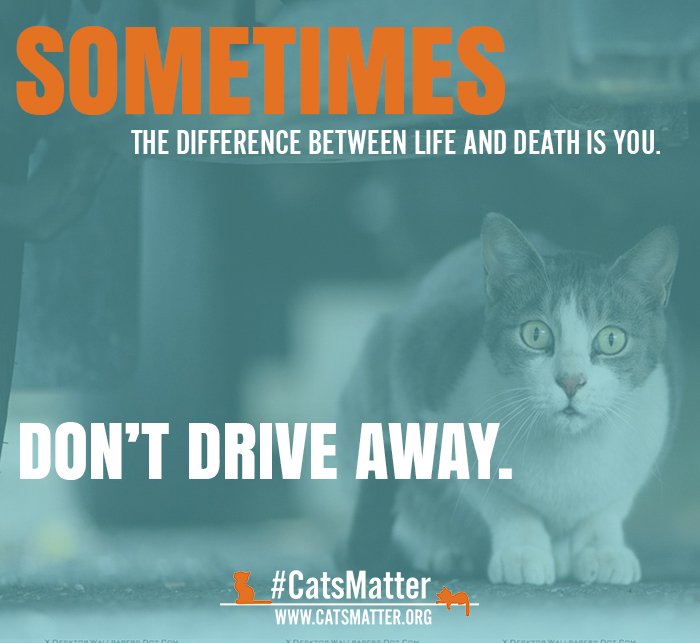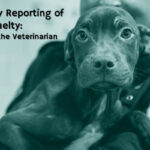Witnessing someone run over a cat on purpose elicits a whirlwind of emotions—shock, outrage, and an overwhelming sense of helplessness. Such an act can be both bewildering and horrifying, highlighting the darker aspects of human behavior. Understanding the gravity of this situation necessitates a methodical approach to what one should do when faced with such an egregious violation of animal welfare.
Firstly, it is imperative to assess the immediate circumstances surrounding the incident. Was this act committed in a populated area? Are there witnesses? The context can greatly enhance the efficacy of your response. In some cases, establishing a pattern of behavior may prove vital in addressing this cruelty more broadly.
If you find yourself as an eyewitness, your initial reaction might be to confront the perpetrator. However, it is crucial to consider safety first. Confrontation may escalate the situation unnecessarily, leading to potential harm to yourself or further brutality to the animal. Instead, focus on documentation. If possible, record the event using your smartphone. Capturing video or photographic evidence will bolster any subsequent reports you file. Consistently, the details such as time, location, and associated license plates of vehicles can substantiate your claims.
After ensuring your safety and collecting evidence, the next step is to contact local authorities. Animal cruelty is not merely a social taboo; it is a legal offense in many jurisdictions. Call your local animal control agency or law enforcement to report the incident. When doing so, relay all relevant information, including the evidence you collected. Your observations can serve as critical components in investigations that follow.
Perhaps unexpectedly, animal cruelty can sometimes serve as an unsettling reflection of broader societal issues. It may hint at psychological disorders or the desensitization of individuals towards violence. Research suggests that those who display a propensity for cruelty toward animals may often exhibit similar behaviors towards humans. Thus, incidents of animal abuse are worth scrutinizing as potential indicators of deeper societal maladies.
Beyond the immediate incident, consider the community dynamics that may enable such acts. Engaging with local advocacy groups can lead to greater community awareness and the pooling of resources for animal welfare initiatives. Advocacy offers an avenue for meaningful conversations surrounding the societal roles animals play in our lives. Hosting educational campaigns within your community to raise awareness about animal rights and welfare can foster a protective culture for animals and discourage malicious behaviors.
In addition to addressing such incidents in the moment, proactive measures should also be a priority. When communities promote awareness of animal rights and humane treatment, they cultivate environments where cruelty is less likely to flourish. Workshops, seminars, and school programs can be instrumental in teaching empathy towards animals and raising reluctant awareness among younger generations.
Engagement with local shelters can further underscore a commitment to animal welfare. Volunteering or donating not only aids in the immediate care of animals in distress but contributes to a larger narrative that prioritizes protection over neglect or abuse. Mutual assistance networks that link community members with local shelters or foster programs can create pathways for animals needing homes and care. The more resources organizations have, the higher the likelihood of discovering and alleviating cases of cruelty.
To that end, foster liberation from concern about retribution or apathy. Many individuals, when confronted with the knowledge of animal cruelty, may feel overwhelmed or powerless. However, incidences of calling attention to animal welfare help to establish a culture that values the sanctity of life across species. Activism extends beyond immediate responses; it encompasses long-term strategies for advocacy, community engagement, and legislative reform.
A concept that often overlaps with discussions of animal rights is the idea of intersectionality. Just as issues of race, gender, and class influence social dynamics, they similarly impact perceptions of animal welfare. Drawing those connections within broader social contexts allows for more comprehensive arguments against cruelty. Understanding how socioeconomic status might impact an individual’s attitude toward animals can influence how effective outreach efforts are when attempting to educate and inform.
After the event is reported, it is beneficial to follow up. Check in with the authorities or organizations handling the case. Your continued engagement can emphasize the public interest in the matter, fostering a sense of accountability among those in charge of enforcement. This can also help push the issue into public consciousness, calling for systemic changes in how animal cruelty is perceived and prosecuted.
Finally, reflect on the profound implications of animal cruelty in society. Every instance of purposeful harm toward an animal reveals a chilling facet of humanity. By standing against such acts, voicing concerns, and fostering communal discussions about empathy and care, individuals can drive cultural shifts towards a more compassionate worldview. The philosophical discourse around our responsibilities towards other beings should not be relegated to mere opinion; it should permeate our collective social action.
In conclusion, encountering someone who deliberately harms a cat is a call to action that requires thoughtful navigation. With each report, each conversation, and each educational initiative, we manifest our commitment to safeguarding the rights and dignity of all living beings. Changing the paradigm rests in our willingness to respond, to care, and to advocate for those who cannot voice their suffering.








